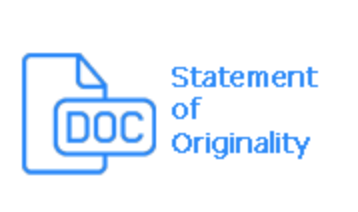The Use of Flipped Classroom Method in Integrated English Course
Abstract
Flipped classroom is the method where the students conduct the activity of the class at home while the activity in the class is conducted at home. This method is one of alternative way to make the learning process running well without eliminating the essential of the learning material itself. The purpose of this research is to implemented the revolution 4.0 where the effectiveness the use of technology can be more optimal. Integrated English is one of the subjects in English Literature. It involved four important skills in English. Thus, to maximize the four skills, this class was using the video as a tool to support the learning material to become powerful. The result of this research is the three phases of flipped classroom method has been achieved. Thus, it can be concluded that the use of flipped classroom method is suitable with the subject of integrated English which it needs the larger exploration through four skills in English.
Downloads
References
Abd, Mervat, Elfatah Ali, and Said Ahmed. 2016. “The Effect of a Flipping Classroom on Writing Skill in English as a Foreign Language and Students’ Attitude Towards Flipping.” US-China Foreign Language 14(2):98–114. doi: 10.17265/1539-8080/2016.02.003
Ayçiçek, Burak, and Tugba Yanpar Yelken. 2018. “The Effect of Flipped Classroom Model on Students’ Classroom Engagement in Teaching English.” International Journal of Instruction 11(2):385–98. doi: 10.12973/iji.2018.11226a.
Dewi, N. P. Sara Sintia, N. N. Padmadewi, and M. Hery Santosa. 2021. “The Implementation of Flipped Classroom Model in Teaching English to Junior High School Students.” Journal of Educational Research and Evaluation 5(1):125–35.
Krisbiantoro, Benny, and Tri Pujiani. 2021. “The Effectiveness of MALL and Flipped Classroom in Teaching Writing to the Eleventh Graders of SMA in Banyumas.” Journal of English Education, Literature, and Culture 6:86–104.
Li, Shuangjiang, and Jitpanat Suwanthep. 2017. “Integration of Flipped Classroom Model for EFL Speaking.” International Journal of Learning 3(2):118–23. doi: 10.18178/IJLT.3.2.118-123.
Nwosisi, Christopher. 2016. “A Study of the Flipped Classroom and Its Effectiveness in Flipping Thirty Percent of the Course Content.” International Journal of Information and Education Technology 6(5):348–51. doi: 10.7763/ijiet.2016.v6.712.
Susana, Kadek Yogi, A. A. Gede Raka, and Wahyu Brahma. 2021. “The Effectiveness of Flipped Learning During the Pandemic to Improve the Writing Competence of STMIK STIKOM Indonesia Students.” RETORIKA: Jurnal Ilmu Bahasa.
Tuan, Luu Trong. 2019. “Enhancing EFL Learners’ Writing Skill via Journal Writing.” Alsuna: Journal of Arabic and English Language 2(2):96–116. doi: 10.31538/alsuna.v2i2.397.
Unal, Zafer, and Aslihan Unal. 2017. “Comparison of Student Performance, Student Perception, and Teacher Satisfaction with Traditional versus Flipped Classroom Models.” International Journal of Instruction 10(4):145–64. doi: 10.12973/iji.2017.1049a.
Zamzami Zainuddin. 2017. “First-Year College Students’ Experiences in the EFL Flipped Classroom: A Case Study in Indonesia.” International Journal of Instruction 10(1):133–50.







